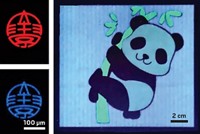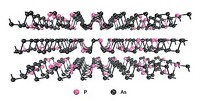Advertisement
Grab your lab coat. Let's get started
Welcome!
Welcome!
Create an account below to get 6 C&EN articles per month, receive newsletters and more - all free.
It seems this is your first time logging in online. Please enter the following information to continue.
As an ACS member you automatically get access to this site. All we need is few more details to create your reading experience.
Not you? Sign in with a different account.
Not you? Sign in with a different account.
ERROR 1
ERROR 1
ERROR 2
ERROR 2
ERROR 2
ERROR 2
ERROR 2
Password and Confirm password must match.
If you have an ACS member number, please enter it here so we can link this account to your membership. (optional)
ERROR 2
ACS values your privacy. By submitting your information, you are gaining access to C&EN and subscribing to our weekly newsletter. We use the information you provide to make your reading experience better, and we will never sell your data to third party members.
Materials
Buckyballs Induce Magnetism In Copper And Manganese
Periodic Table: Electron-transfer effect could yield new materials for applications such as computer memory and power generation
by Jyllian Kemsley
August 17, 2015
| A version of this story appeared in
Volume 93, Issue 32
Only iron, cobalt, and nickel are permanently magnetic at room temperature, a property known as ferromagnetism that stems from how valence electrons are distributed and interact with each other within the metal. To develop or improve applications that use magnetism, such as computer memory and power generation, researchers would like to induce the property in other elements. Layering C60 on thin films of either copper or manganese successfully makes the metal layers ferromagnetic, reports a team led by Oscar Cespedes of the University of Leeds, in England (Nature 2015, DOI: 10.1038/nature14621). The magnetization arises from electron transfer from the metal to C60, and it’s not limited to layering with buckyballs, Cespedes notes. Other materials with high electron affinity, as well as other metals, will also work. The effect depends on the thickness of the layers: The copper layer must be 2 to 3 nm thick, the manganese layer 2 to 15 nm thick, and the C60 layer 10 to 20 nm thick. The metal’s nonmagnetic bulk properties take over if the layers are too thick, and the magnetization drops off if the assemblies oxidize.




Join the conversation
Contact the reporter
Submit a Letter to the Editor for publication
Engage with us on Twitter